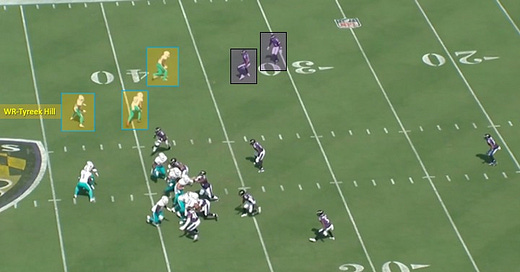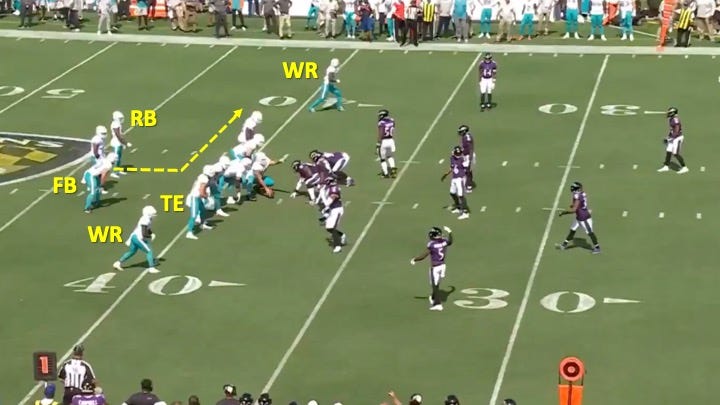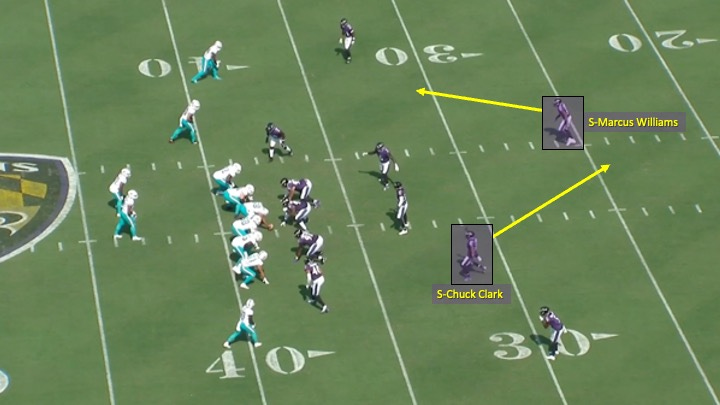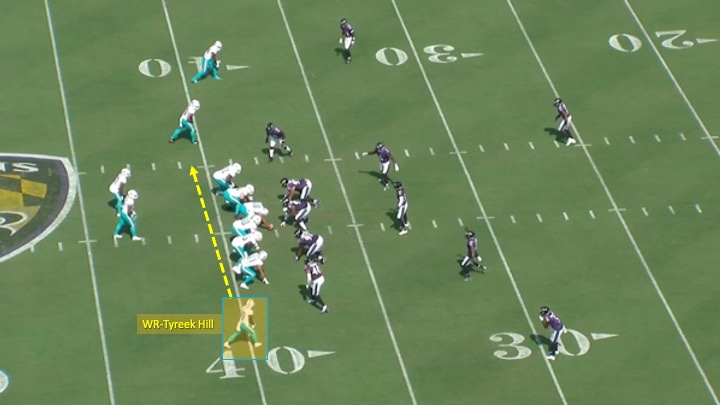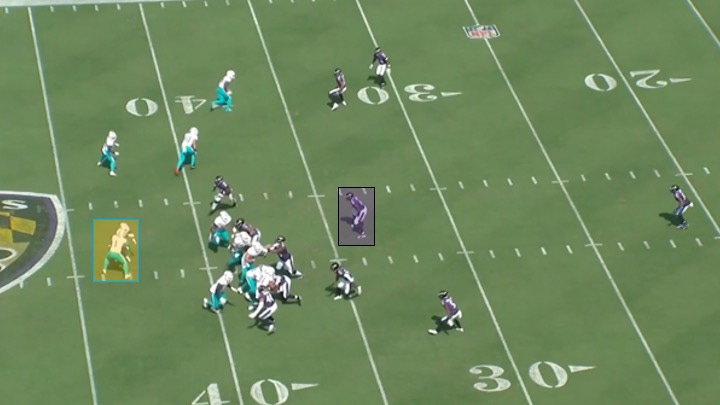Part 1 of our breakdown on the Dolphins’ use of motion focused on how Mike McDaniel utilizes it to take advantage of his personnel. In this breakdown, I’ll focus more on the ways he uses it to consistently scheme open receivers and create constant offense regardless of the personnel.
Motion on Top of Shifts
Motion itself can be enough to stress a defense. But the Dolphins take this one step further by frequently using shifts before using motion, forcing defenses to be nothing short of perfect with their checks and pre-snap communication.
This week 2 play against the Ravens from last season gives you an idea of the effect this tactic can have on a defense. Here, Miami started off in a 2x1 formation with two backs in the backfield. Then they motioned fullback Alec Ingold to the left, creating a 2x2 set:
The Ravens checked to a different coverage. Below, you can see safety Chuck Clark signaling and communicating to the rest of the defense and safety Marcus Williams rotating down to the other side:
After the Ravens had already begun moving in response to the shift, Tyreek Hill motioned across the formation. That created a 3x1 set:
Between their initial alignment, the shift, and the motion, the Dolphins showed the Ravens 3 different formations. On top of that, this was an RPO, which gave the defense another thing they had to react to. Post-snap, the QB-RB mesh in the backfield would hold the inside linebacker in the middle of the field initially:
The end result was a 3-on-2 advantage for the Dolphins with Tyreek Hill getting the ball in space. That’s not what you want as a defense:

